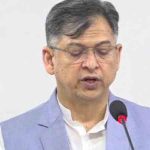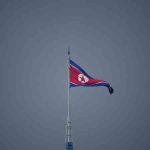57 Bawm families return to Paikshyong Para after eight months of displacement

In a significant development following the inaugural meeting between the Kuki-Chin National Front (KNF) and the Peace Establishment Committee, 57 families of the Bawm community from Paikshyong Para have returned to their homesteads after an eight-month period of refuge in various locations. While this marks a positive step, some families remain displaced, with ongoing efforts by the authorities to facilitate their return.
Paikshyong Para, situated within the 6th Ward of Rowangchhari Sadar Union, is predominantly inhabited by the Bawm community, comprising 97 families. Due to fears of the KNF in April this year, a mass exodus from the village took place, with families seeking shelter in disparate locations, including jungles and the homes of relatives. A recent initiative, supported by the army last Saturday, successfully reinstated 57 of these families to Paikshyong Para. The local community remains hopeful for the return of the remaining 40 families.
Pitar Bawm, the village head, recounts the April exodus triggered by a joint force operation against the KNF, noting the army’s pivotal role in the recent return of approximately 200 individuals from 57 families. He remains optimistic about the return of the remaining families.
The repercussions of this crisis were far-reaching, resulting in the closure of local schools due to safety concerns. The situation has seen a turnaround, with the Kyaplangpara Manik Government Primary School resuming classes as students began returning yesterday. The school teachers anticipate a full revival of educational activities shortly.
Rowat Lian Bawm, an assistant teacher at the school, confirms the resumption of regular classes and expresses hope for the normalisation of the educational environment.
In a related development, the Prata Para area near the Thanchi-Ruma border, which witnessed the displacement of 28 families, saw the return of 11 Bawm families, comprising 49 individuals, again with military assistance last Saturday. Efforts are ongoing to assist the remaining 17 families in finding their way back home.
Piar Niyar Bawm Roni, a 38-year-old resident of Prata Bawm Para, shared his relief and happiness upon returning home after an arduous nine-month period in the wilderness and at relatives’ homes, a consequence of the turmoil involving the KNF and security forces.
The army’s recent organisation of a free medical camp for the returning families of Paikshyong Para is a testament to the ongoing support efforts. The camp offered various medical services at no cost to the beneficiaries, including men, women, and children. Besides medical aid, during this time, road repairs from Paikshyong Para to Ronin Para, distribution of educational materials and winter clothes, and other forms of assistance were promised by the army and representatives.
Mehla Ong Marma, Chairman of Rowangchhari Sadar Union, acknowledged the difficulties that led to the mass departure of villagers but noted that they were gradually returning after eight months. He assured comprehensive support from the Union Parishad to the returning villagers.
Lalzar Lam Bawm, president of the Bawm Social Council and a member of the Peace Establishment Committee, highlighted the lifting of market restrictions post the November 14 meeting with the KNF. He also brought attention to ongoing dialogues with the chairman of the Bandarban Hill District Council concerning food shortages in Paikshyong Para, expressing optimism about future aid.
Lieutenant Colonel Mahmudul Hasan, Zone Commander of Bandarban Sadar Zone, reaffirmed the commitment to provide all necessary support to the returning families. He mentioned that initial medical assistance had already commenced and anticipated further progress following the completion of road repair work. The Rowangchhari-Paikshyong Para road, currently under repair by the Chittagong Hill Tracts Development Board and supervised by the army, is expected to open soon, enhancing public access and contributing to the peace and economic stability of the local populace.
















